10 Exercises to Tone Every Part of Your Body
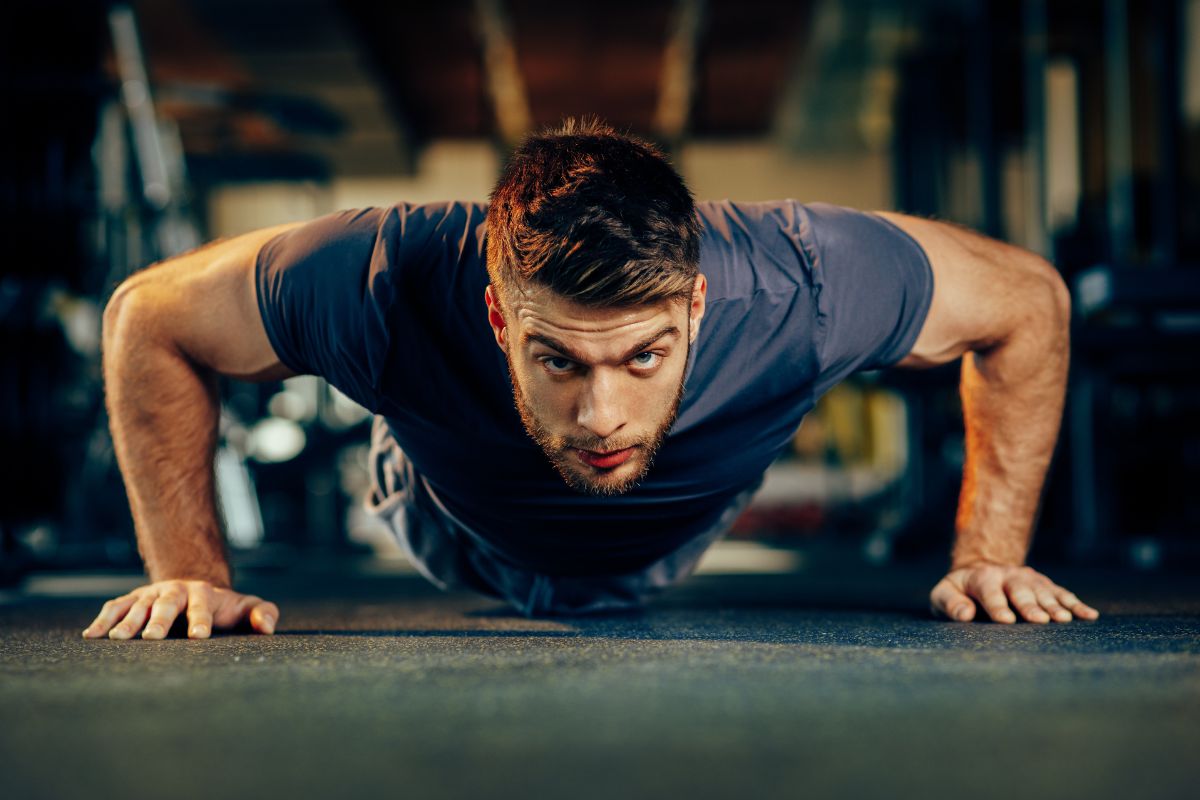
Confidently start your at-home exercise. These ten bodyweight exercises tone your arms, legs, glutes, core, back, and entire body without equipment. Every workout below consists of the muscles targeted, directions, and safe-guarded techniques. Depending on your degree of fitness, do two to three sets of each exercise (with eight to fifteen repetitions or thirty to sixty seconds advised). You have to keep a good attitude and concentrate on form!
1. Push-Ups
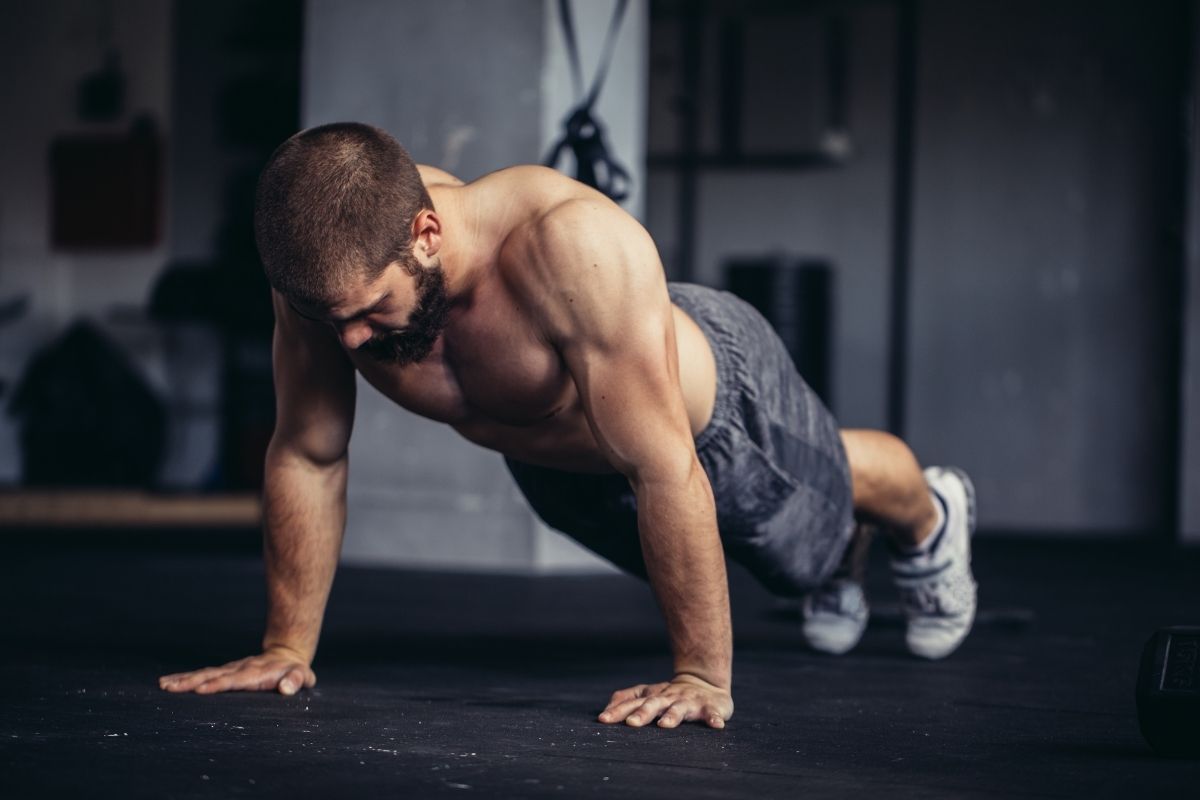
- How To: Start in a high plank (push-up) exercise position with hands shoulder-width apart and body straight line. Tightening your core, bend your elbows and lower your chest towards the floor; then, push back up.
- Muscles Worked: Chest (pectorals), shoulders (anterior deltoids), triceps, and core—muscles worked.
- Advice: Keep your spine straight and use your abs and glutes to prevent hip sagging. Start with eight to twelve repetitions each set. Should it be too difficult, try knee push-ups—do the same motion using knees on the floor.
2. Diamond Push-Ups (with an eye towards triceps)
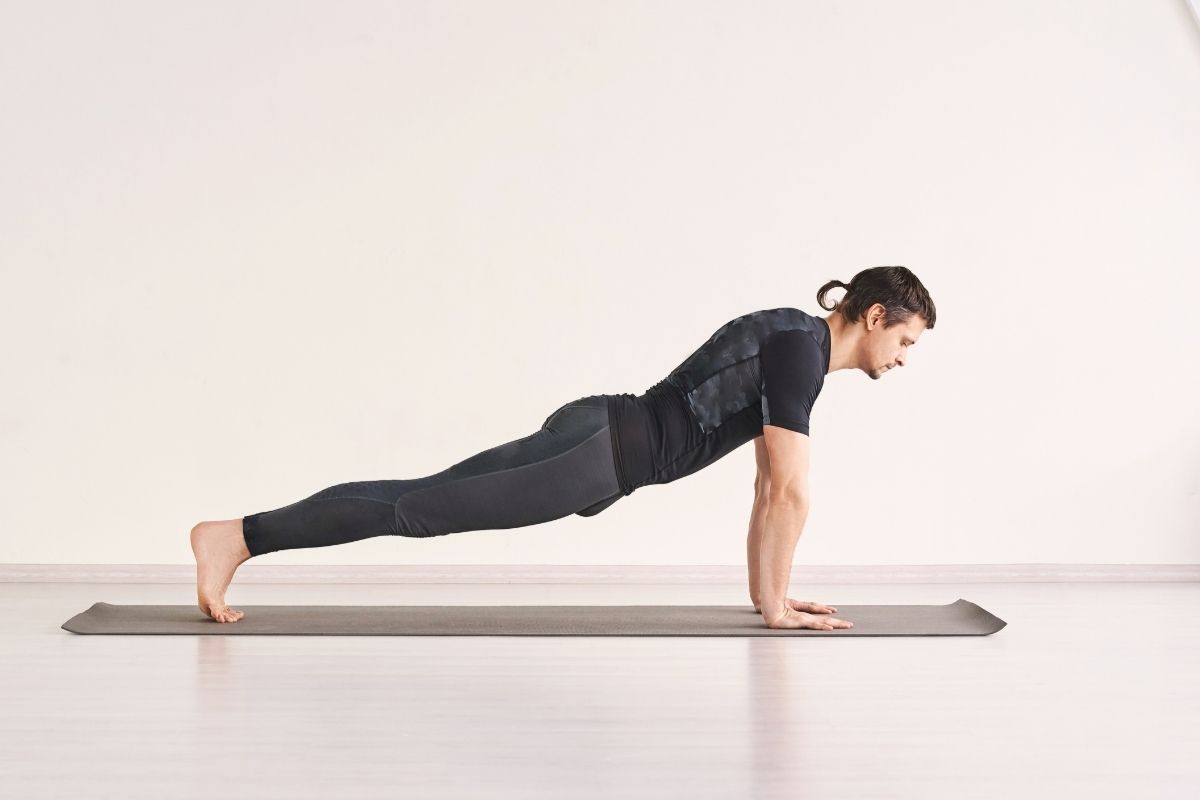
- How To: Get into plank exercise position, then form a diamond (triangle) shape with your hands exactly under the centre of your chest. Tightening your core, lower your body until your chest almost brushes your hands, then press back up.
- Muscles Operated: Mostly the triceps (all three heads), shoulders (deltoids) and upper back (trapezius).
- Advice: To really fire the triceps, keep your elbows tucked close to your body. Start with less repetitions (e.g., 6–10 per set) or perform the push-up part on your knees until you develop strength since this is harder than a standard push-up.
3. Squats Based on Body Weight
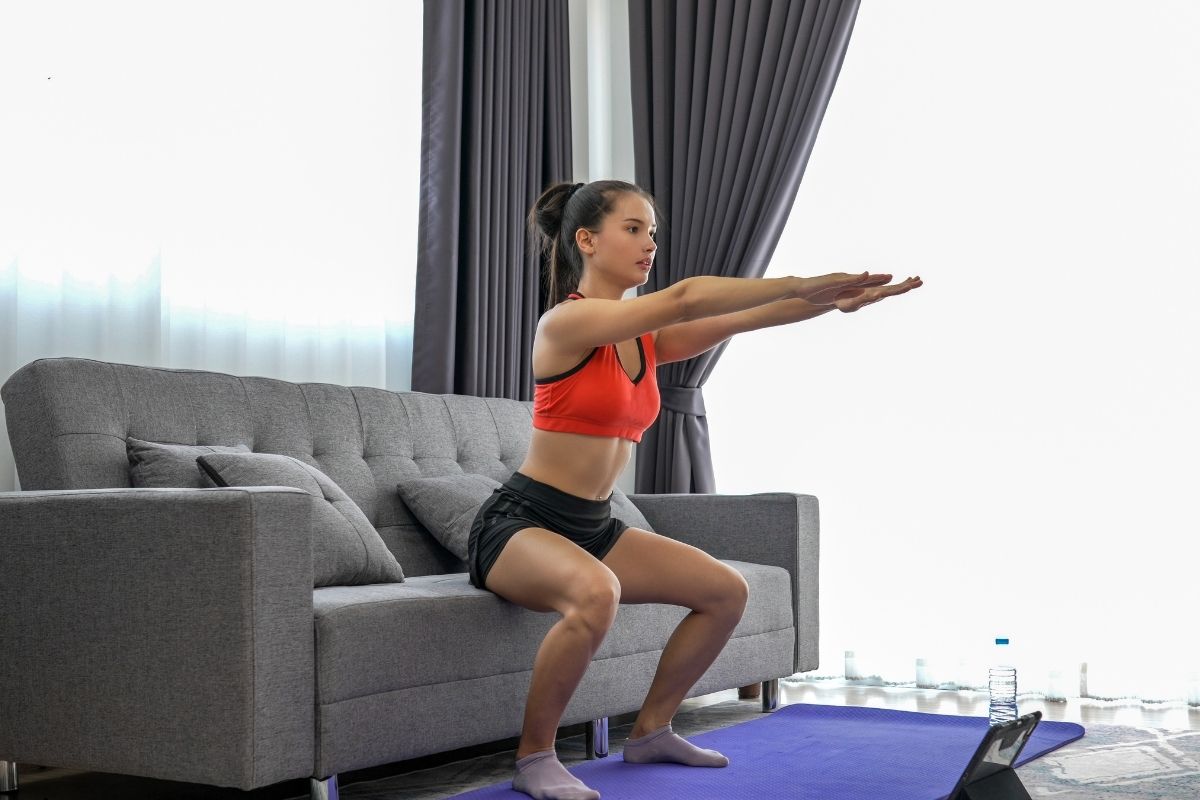
- How To: Standing with feet just wider than hip-width, point your toes somewhat outward. Maintaining your chest up and spine neutral, push your hips back and bend the knees to lower your body as if seated in a chair. After descending until your thighs are at least parallel to the floor—or as low as comfortable—drive through your heels to stand back up.
- Muscles Worked: Glutes (gluteus maximus), calves, core, hamstrings, and quadriceps. A compound exercise that tones your entire lower body and aids in midsection stabilisation is squats.
- Advice: Try not to let your knees cave inward; keep your weight in your heels instead of your toes. Stand and squeeze your glutes. For every set, do 10–15 repetitions. A sumo squat variation or widening your stance will help you activate your glutes.
4. Lunges Forward
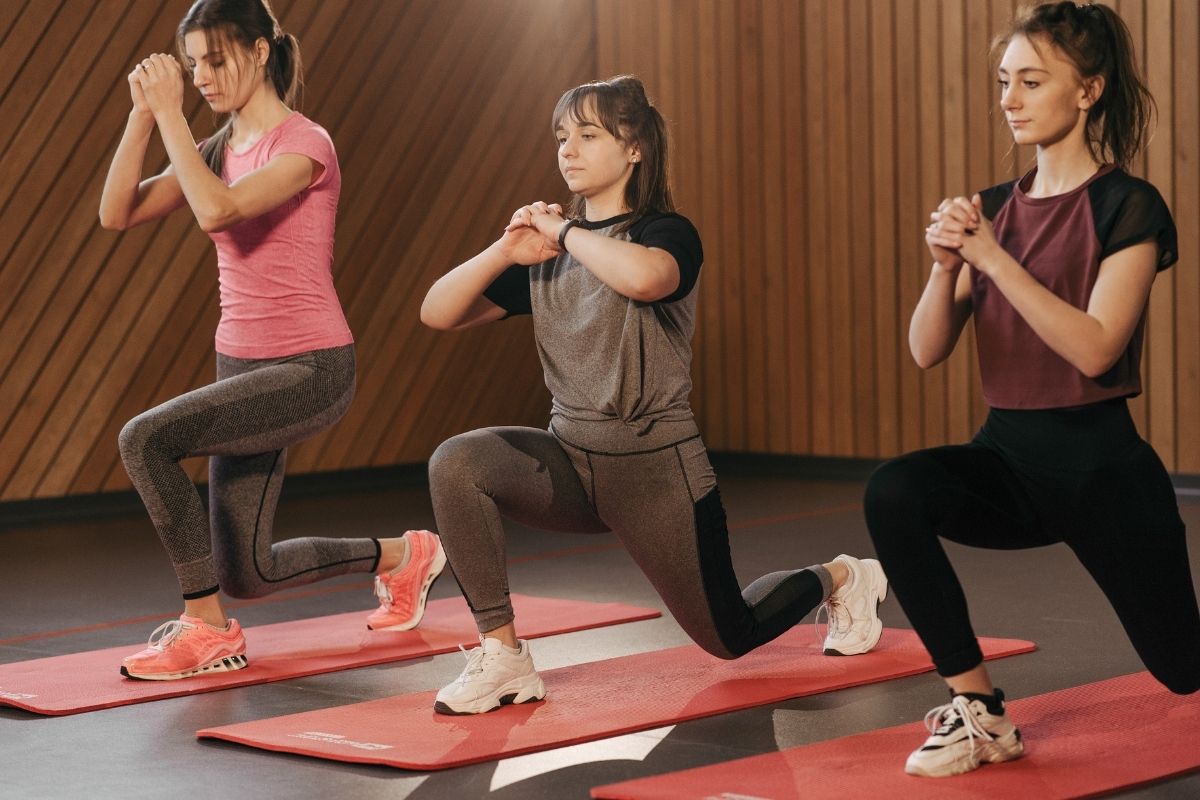
- How To: Stand tall and step one foot forward in a long stride. Bend both knees to lower your body until the back knee hovers just above the floor and the front thigh is roughly parallel to the ground. Make sure your front knee stays above your ankle and doesn’t track past your toes. Then repeat on the other leg after pushing through the front heel to get back to standing.
- Muscles Worked: Mostly the hamstrings, glues, and quadriceps with assistance from the calves and core stabilisers. Lunges exercise works the core and back muscles to maintain balance and resemble natural stepping motions.
- Advice: Maintaining your torso straight and your core engaged will help. On each leg, every set, do 8–12 repetitions. Reverse lunges—stepping backwards rather than forward—help you to highlight the glutes.
5. Glute Bridges
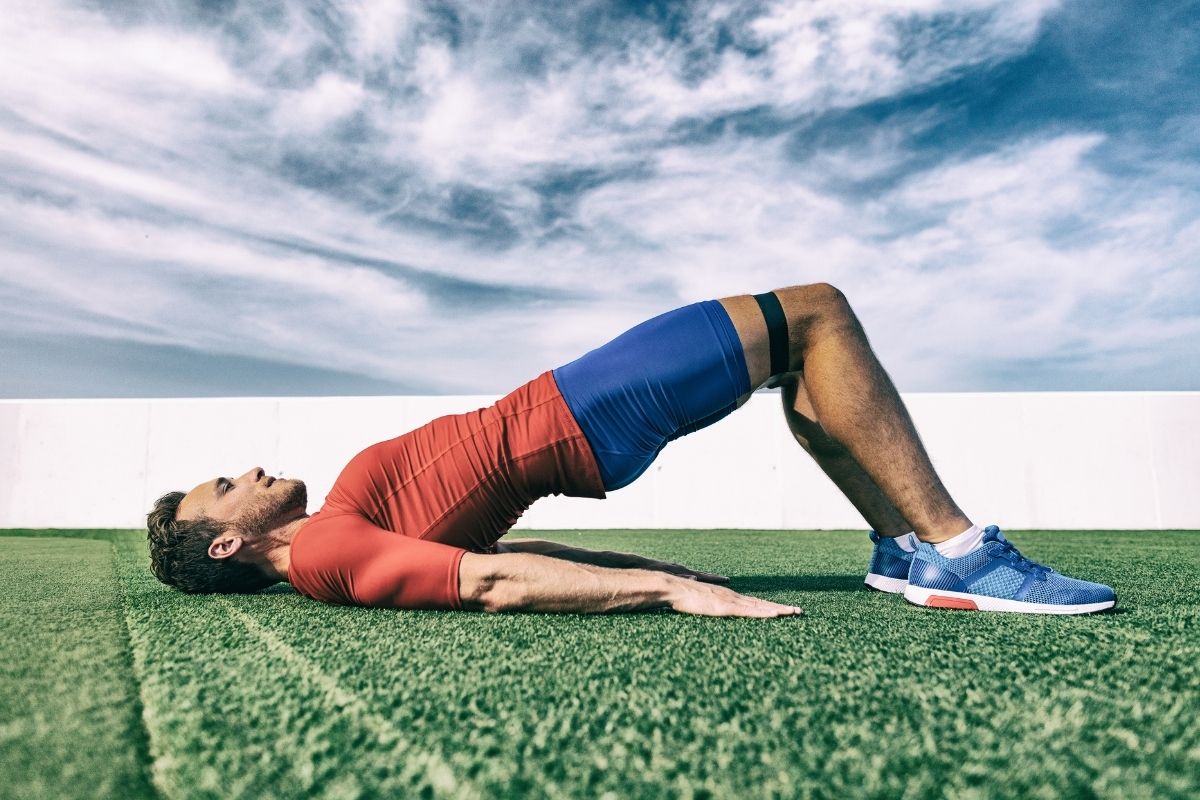
- How To: Lie on your back hip-width apart, knees bent and feet flat on the floor. Squeeze your glues to engage your core and lift (drive) your hips until your body forms a straight line from shoulders to knees. Hold at the top for a second then gently descend.
- Muscles Worked: Along with the hamstrings and the deep core muscles (transversus abdominis), the main butt muscle, Gluteus maximus, stars here. Excellent for strengthening core stability and hip tightness are glute bridges.
- Advice: Think of lifting through your hips; avoid arching your lower back. Stop at the top to truly squeeze your glues. Target twelve to fifteen repetitions per set. To advance, work the gluteus medius by trying single-leg bridges (one leg in the air) or, if you have one, by positioning a resistance band above your knees.
6. Plank
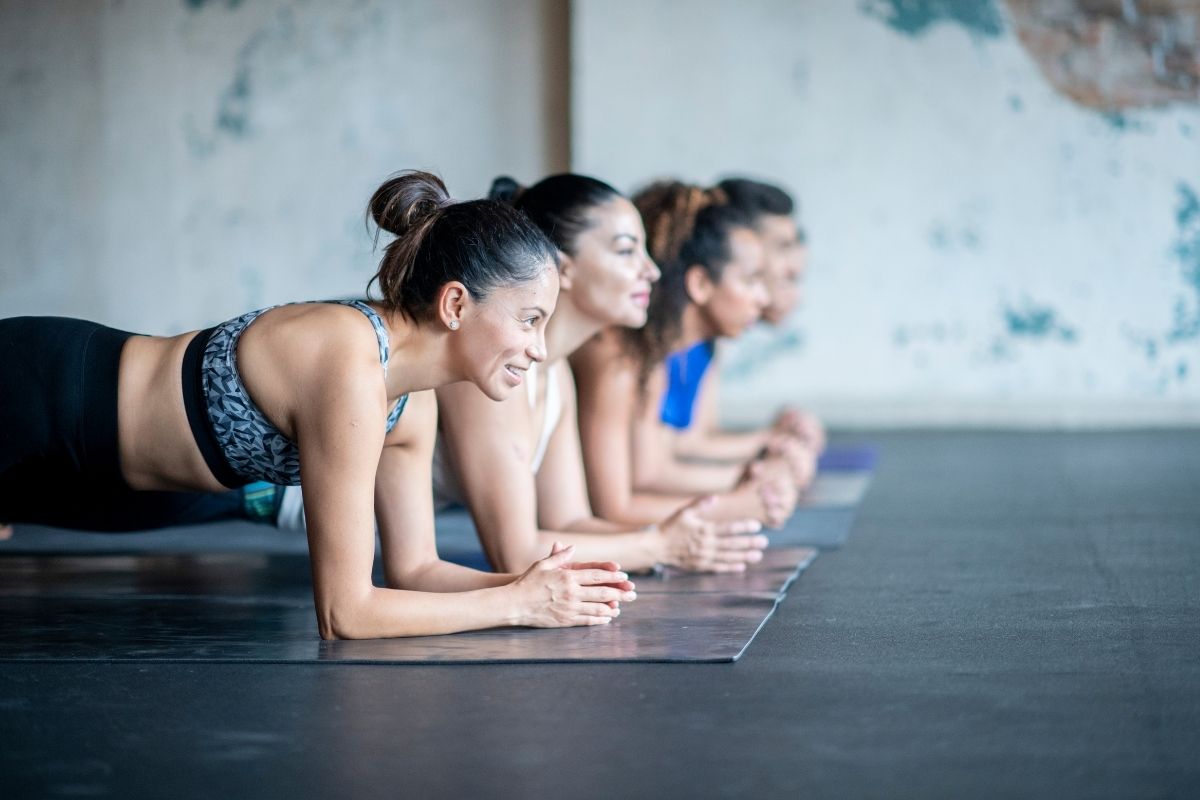
- How To: From a push-up stance, straighten your body with arms fully extended (or on forearms), shoulders over elbows, and feet hip-width apart. Keep your glutes tight, back flat (not sagging or hiking), and core tight.
- Muscles Worked: Planks exercise mostly target the core muscles—abs, obliques, transverse abdominis)—to stabilise the spine. Along with your shoulders and arms to maintain the position, they also work the glutes, hamstrings, and lower back. That is a really complete-body isometric hold.
- Advice: Work up to 60 seconds or more starting with 15 to 30 seconds per rep. Keep breathing consistently. Stressing a long straight line from head to heels, If a full plank is first too difficult, start with modified plank on your forearms or knees and progressively increase.
7. Side Plank
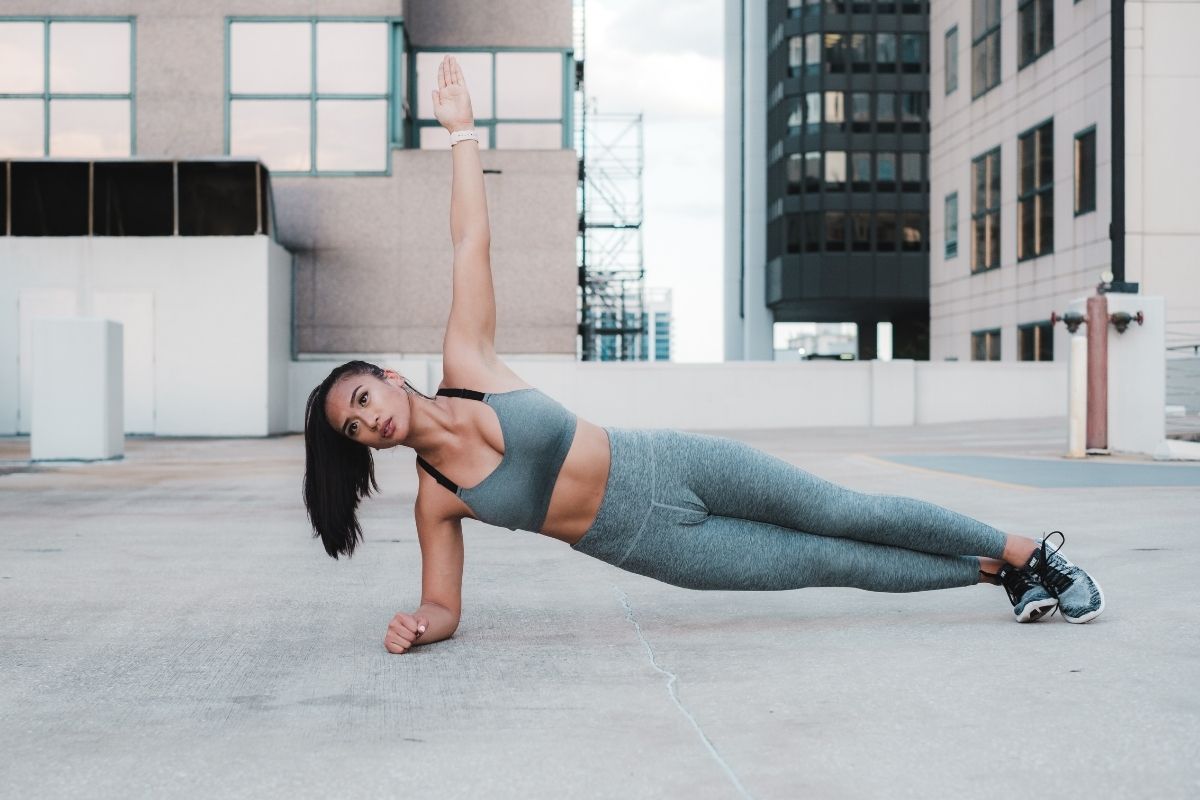
- How To: Lie on one side, then prop yourself up on your forearm, elbow under shoulder. Stack your feet or start one in front of the other. Lift your hips to have your body run a straight line from head to heels—or knees if modified. Keeping your upper arm vertical will help. Hold them, move to the other side.
- Muscles Worked: Targeting the obliques (side abdominal muscles), side planks exercise also strengthens the hips and shoulders, so balancing the body. Their strengthening of deep core and spinal stabiliser muscles increases lateral stability.
- Advice: Hold 20 to 30 seconds on each side—or less if you are just starting. Make sure your body keeps straight—that is, without hip sagging. An easier variation is bending the bottom knee. Squeeze hips and side abs all through the hold.
8. Superhero
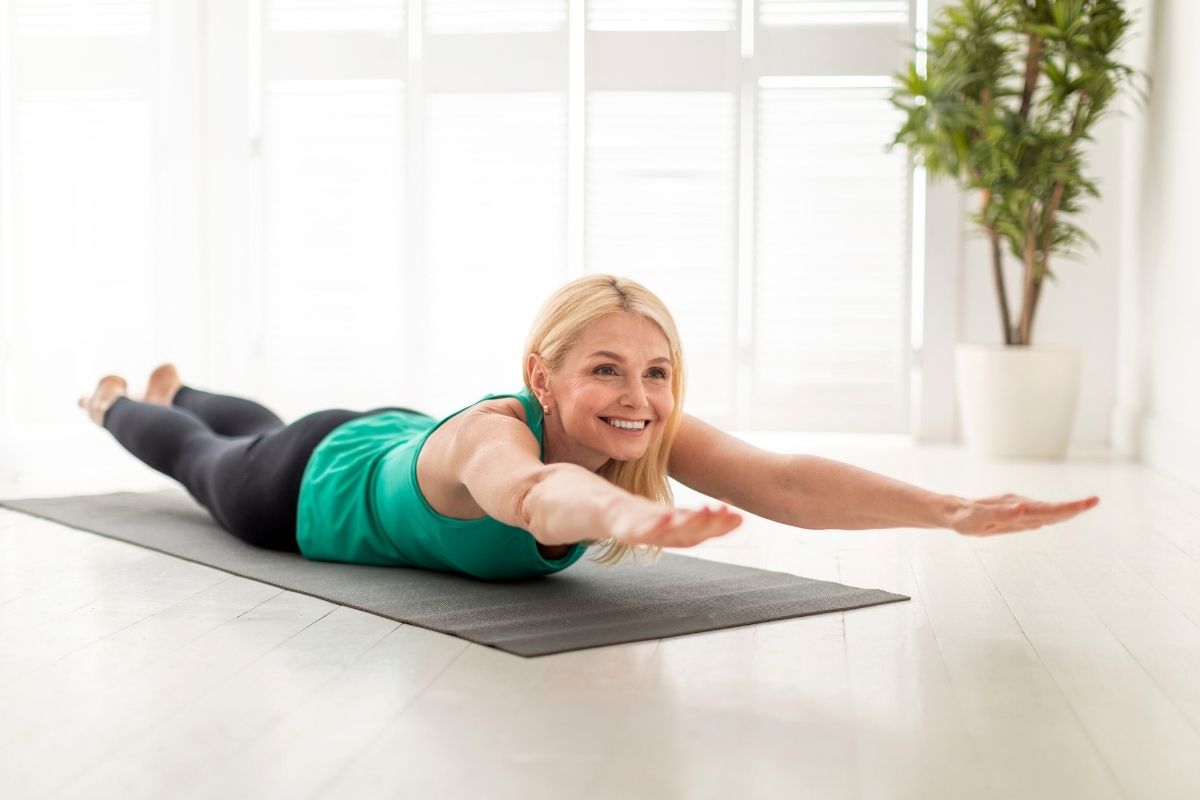
- How To: Lie face down on the floor, legs straight and arms stretched overhead. Contracting your lower back and glutes, simultaneously raise your arms, chest and legs a few inches off the ground. Keep your head neutral; avoid cringing it upward. Hold briefly; then lower back down.
- Muscles Worked: This motion targets the hamstrings, glutes, and lower back (erector spinae). It builds your posterior chain, so enhancing back strength and posture.
- Advice: Lift only as high as comfortable; few inches is plenty. Maintaining your breathing, look down to prevent neck strain. Start with 8–12 repetitions, holding each for 2–3 seconds at top.
9. Burpees
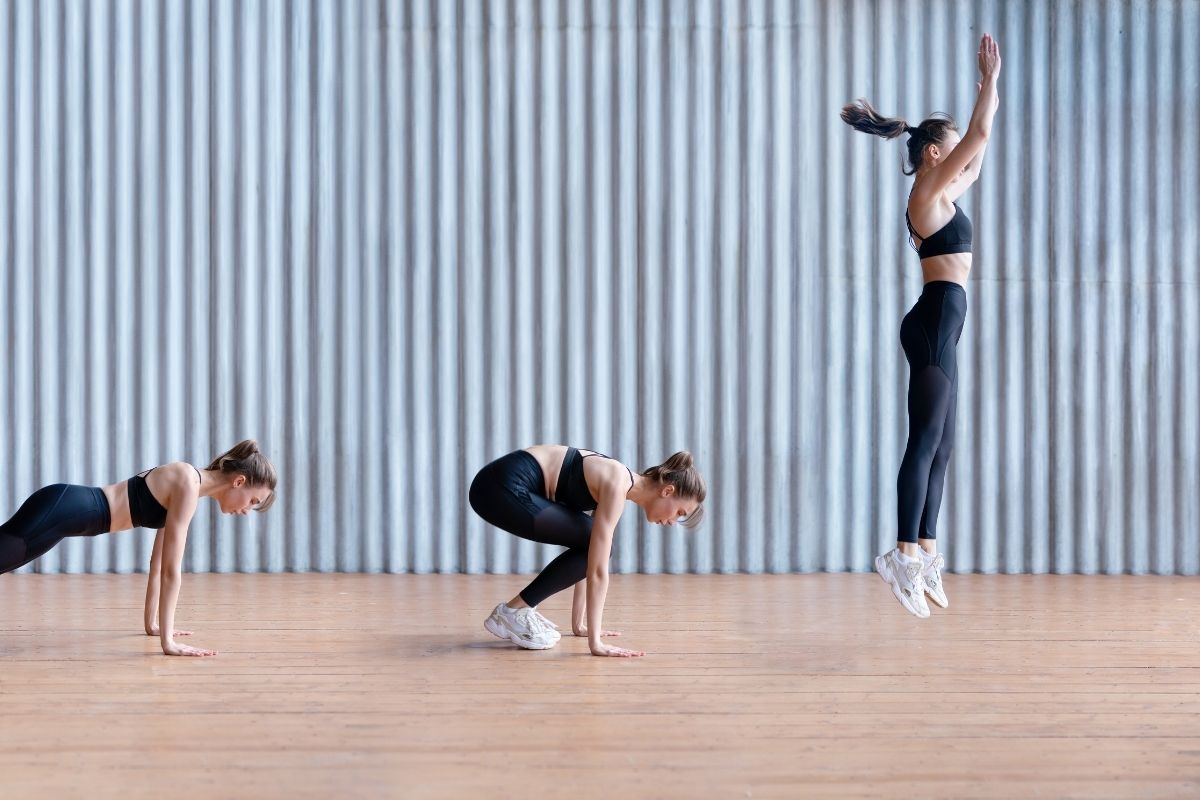
- How To: Start standing then lower yourself and lay your hands on the floor. Revers your feet to land in a plank (push-up) stance. Straight jump your feet back towards your hands, stand up, and finish with a little leap and reach overhead. (Optional push-ups in plank form increase challenge.)
- Muscles Worked: Burpees exercise constitute a complete-body cardio exercise. They work your arms, core, chest, shoulders, glues, and legs. Through the squat, plank, and jump phases practically every major muscle group is engaged.
- Advice: Land softly and move steadily. Start with five to ten burpees then increase as you get more fit. Burpees raise heart rate, thus rest 60 seconds between sets of 5–10. Keep good form: land softly on your feet, core tight, chest not collapsing on the floor.
10. Climbers of Mountains
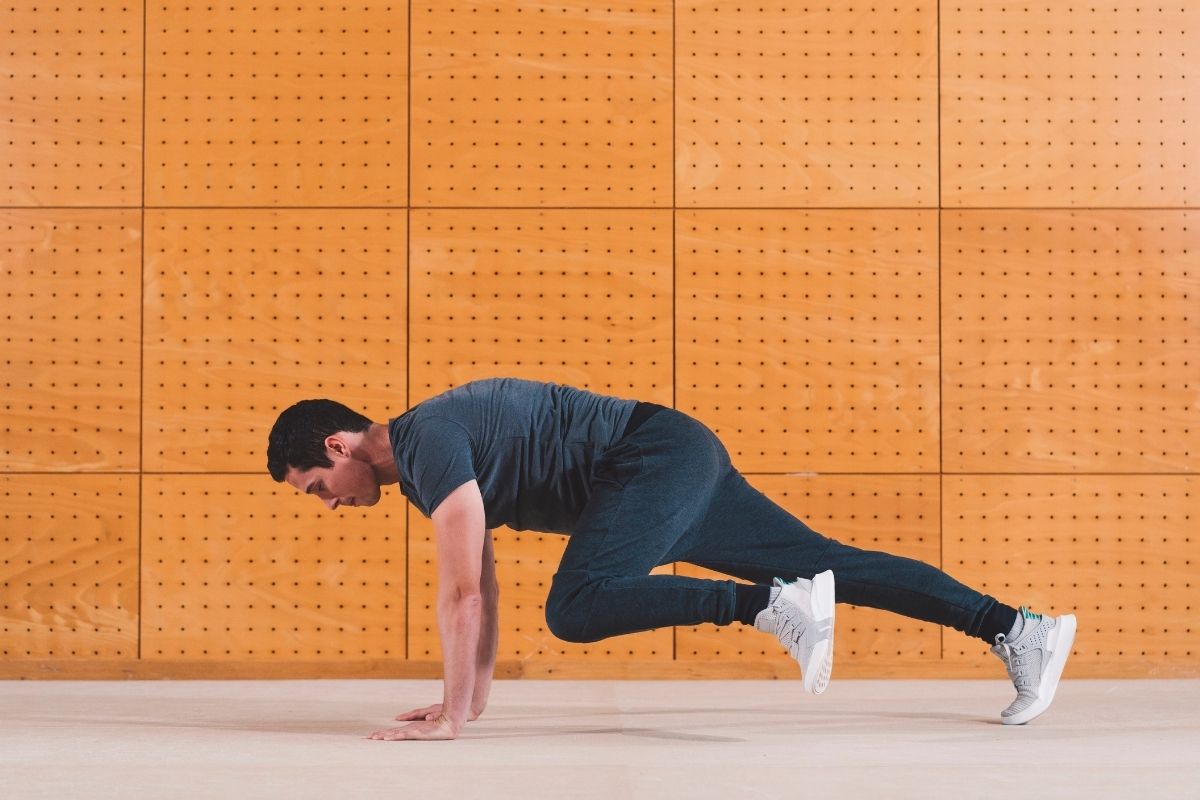
- How To: Starting in a high plank exercise, how would you: Drive your right knee towards your chest, then fast switch to drive your left knee in (as if running in place against the floor). Keeping your hips down and back flat, move at a controlled, quick speed.
- Muscles Worked: Mountains climbers provide a total-body exercise for your muscles. Your core keeps you steady, your shoulders, arms, and chest help to stabilise the upper body; most of the “driving” action comes from your quadriceps, front thigh muscles. For cardiovascular advantages, they also raise your heart rate.
- Advice: Maintaining your body straight and core engaged will help to prevent hip sag. Include in your routine sets of 20 to 30 seconds (or 10 to 20 repetitions each leg). Push through and feel how this action increases core stability and endurance; it also helps to boost intensity!
You can do each of these exercises at home using just your bodyweight. Start with what feels reasonable, concentrate on good form, and progressively increase your repetitions or sets. Pay attention to your body and, should you need breaks, pause. Keep consistent and acknowledge your improvement; every exercise session moves you towards a better, more toned you!






